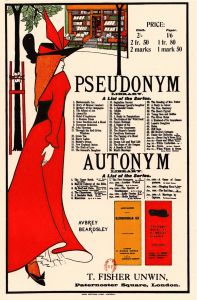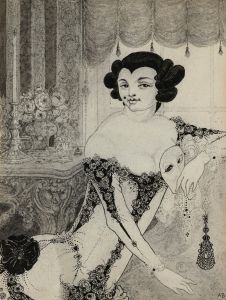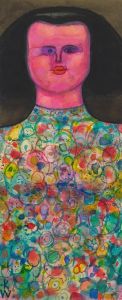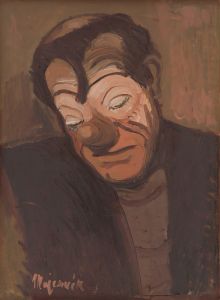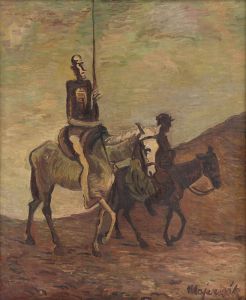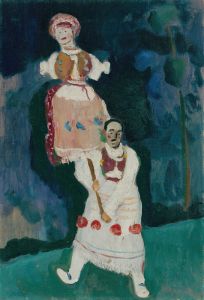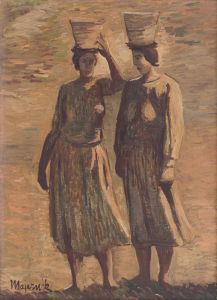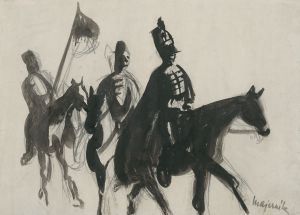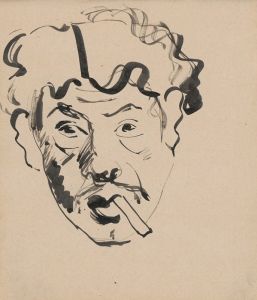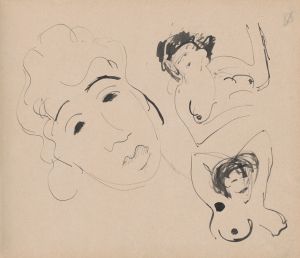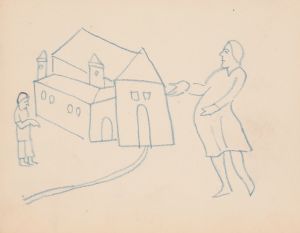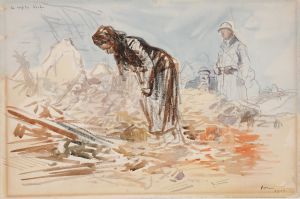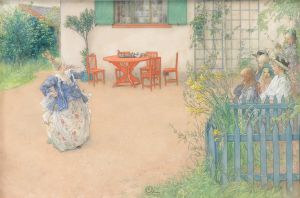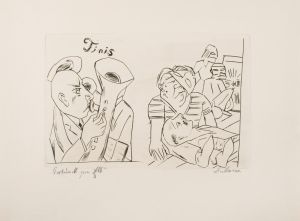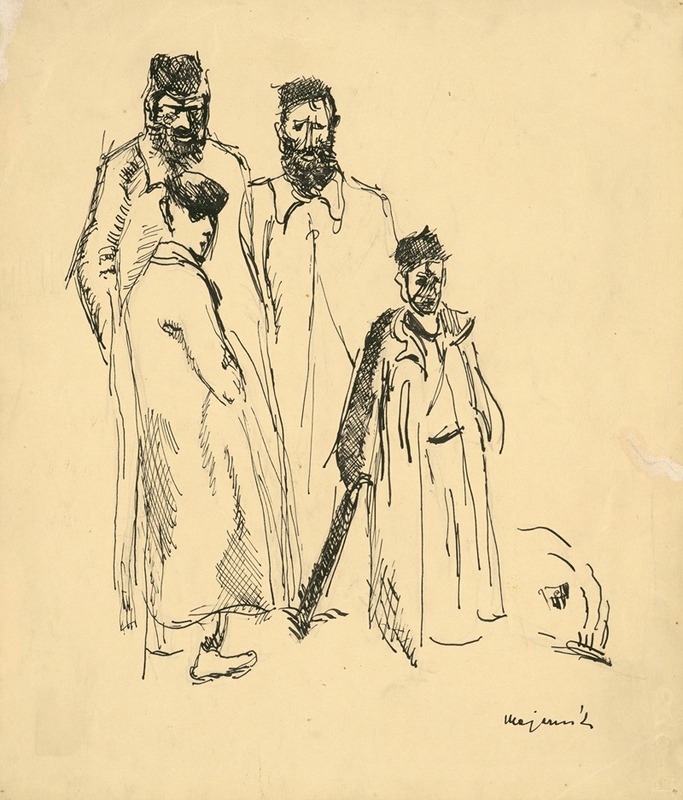
Drawing for the Short Story The Wise Men’s Well from Selma Lagerlöf
A hand-painted replica of Cyprián Majerník’s masterpiece Drawing for the Short Story The Wise Men’s Well from Selma Lagerlöf, meticulously crafted by professional artists to capture the true essence of the original. Each piece is created with museum-quality canvas and rare mineral pigments, carefully painted by experienced artists with delicate brushstrokes and rich, layered colors to perfectly recreate the texture of the original artwork. Unlike machine-printed reproductions, this hand-painted version brings the painting to life, infused with the artist’s emotions and skill in every stroke. Whether for personal collection or home decoration, it instantly elevates the artistic atmosphere of any space.
Cyprián Majerník was a Slovak painter known for his poignant and expressive works, often reflecting themes of human struggle and existential contemplation. One of his notable works is the drawing for the short story "The Wise Men’s Well" by Selma Lagerlöf. This drawing is an interpretation of Lagerlöf's narrative, which is part of her rich literary oeuvre that often blends folklore with moral and philosophical themes.
Majerník was born on November 24, 1909, in Veľké Kostoľany, then part of the Austro-Hungarian Empire, now Slovakia. He studied at the Academy of Fine Arts in Prague, where he was influenced by the prevailing artistic movements of the time, including expressionism and surrealism. His works often reflect a deep empathy for the human condition, likely influenced by the turbulent socio-political climate of Europe during his lifetime, including the rise of fascism and the impact of World War II.
Selma Lagerlöf, the first female writer to win the Nobel Prize in Literature in 1909, is renowned for her storytelling that often incorporates elements of Swedish folklore and legend. "The Wise Men’s Well" is one of her many stories that explore themes of wisdom, morality, and the human experience. While specific details about Majerník's drawing for this story are limited, it can be inferred that his interpretation would align with his typical style, characterized by emotive figures and a somewhat somber palette, reflecting the introspective and moralistic nature of Lagerlöf's writing.
Majerník's artistic career was tragically cut short due to his struggles with multiple sclerosis, which led to his untimely death on July 4, 1945, in Prague. Despite his relatively short life, his work left a significant impact on Slovak art, and he is remembered as a key figure in the development of modern art in Slovakia. His drawings and paintings are noted for their emotional depth and technical skill, often conveying a sense of melancholy and introspection.
The drawing for "The Wise Men’s Well" would likely have been created during a period when Majerník was deeply engaged with themes of existentialism and human suffering, reflecting both his personal challenges and the broader context of a world at war. His ability to capture the essence of literary works through his art demonstrates his profound understanding of narrative and emotion, making his interpretations valuable contributions to both the visual and literary arts.
While specific exhibitions or collections featuring this particular drawing are not well-documented, Majerník's works are held in various galleries and collections, particularly in Slovakia and the Czech Republic, where his legacy continues to be celebrated. His art remains a testament to his skill and sensitivity as an artist, as well as his ability to convey complex human emotions through his chosen medium.





